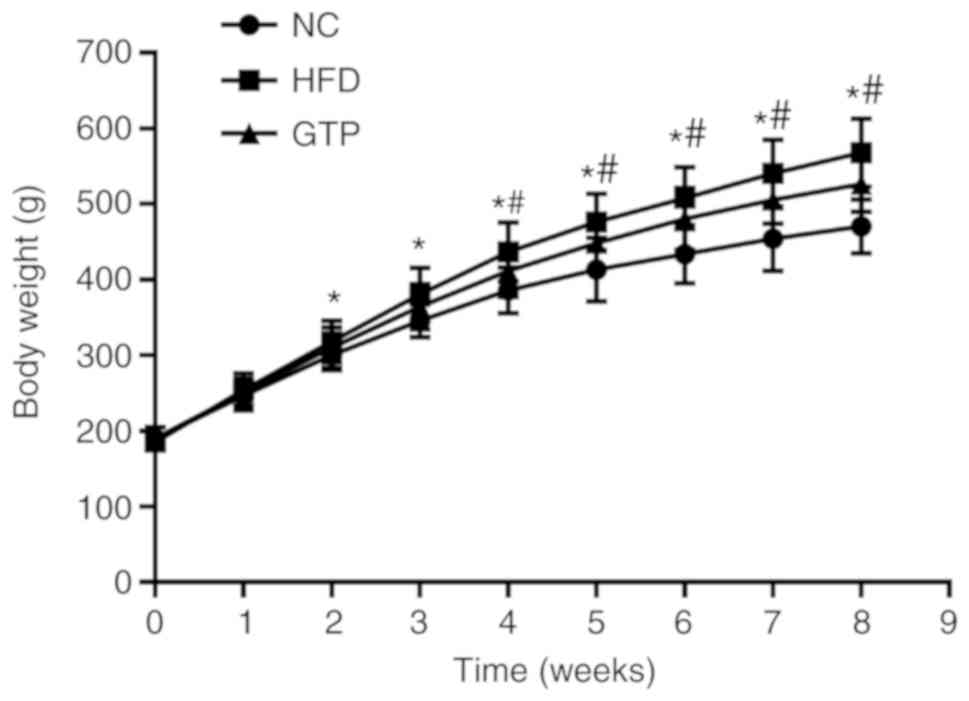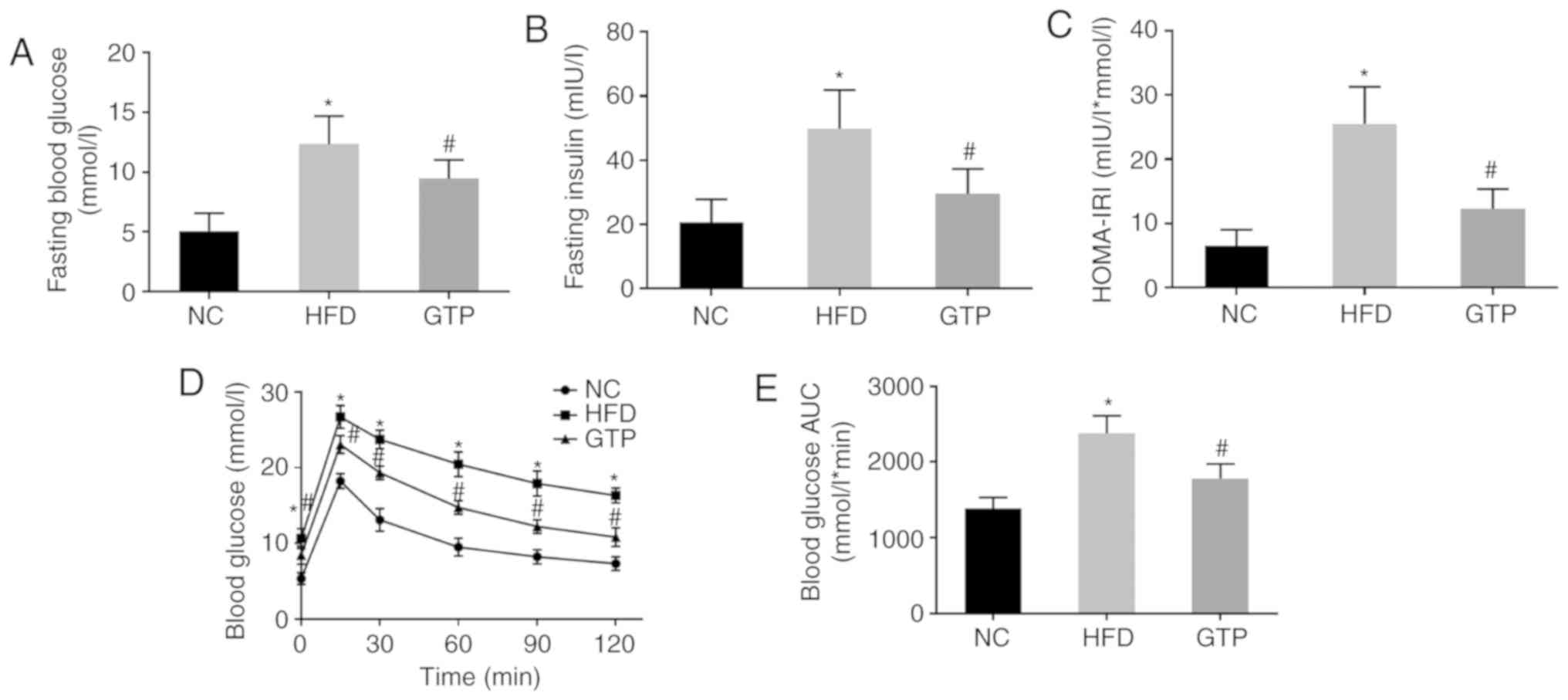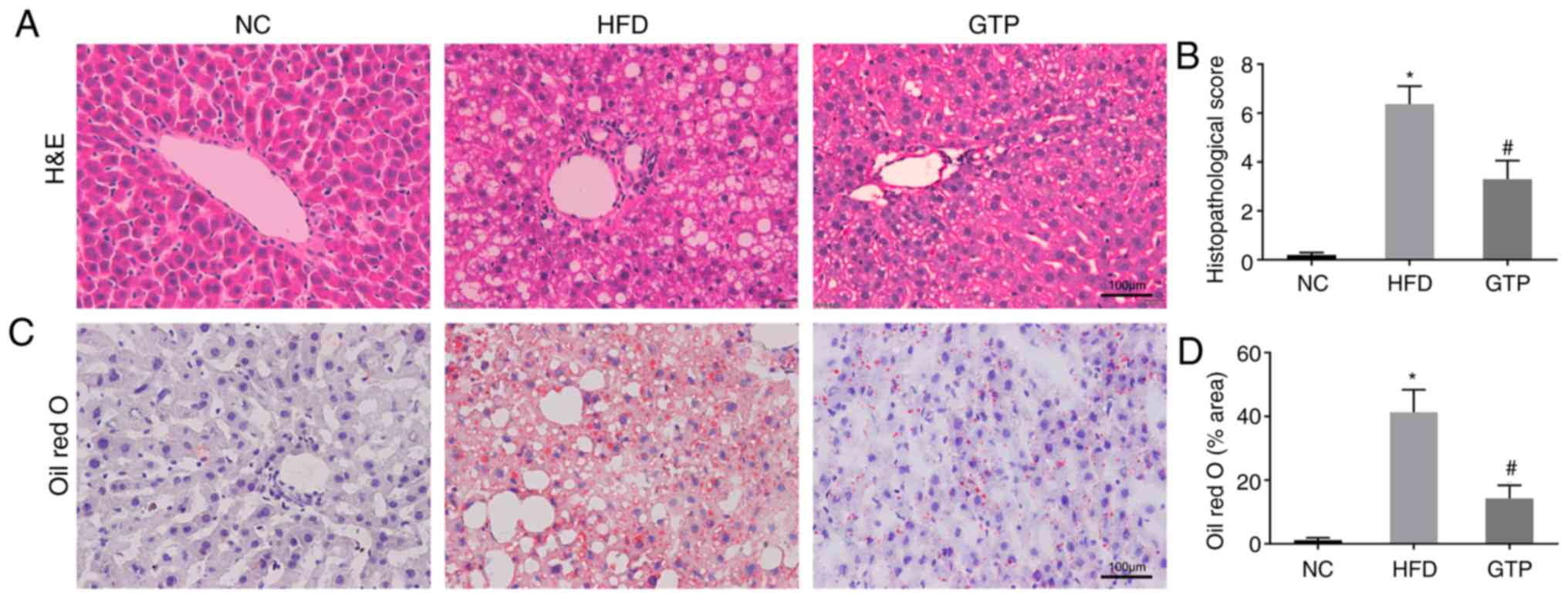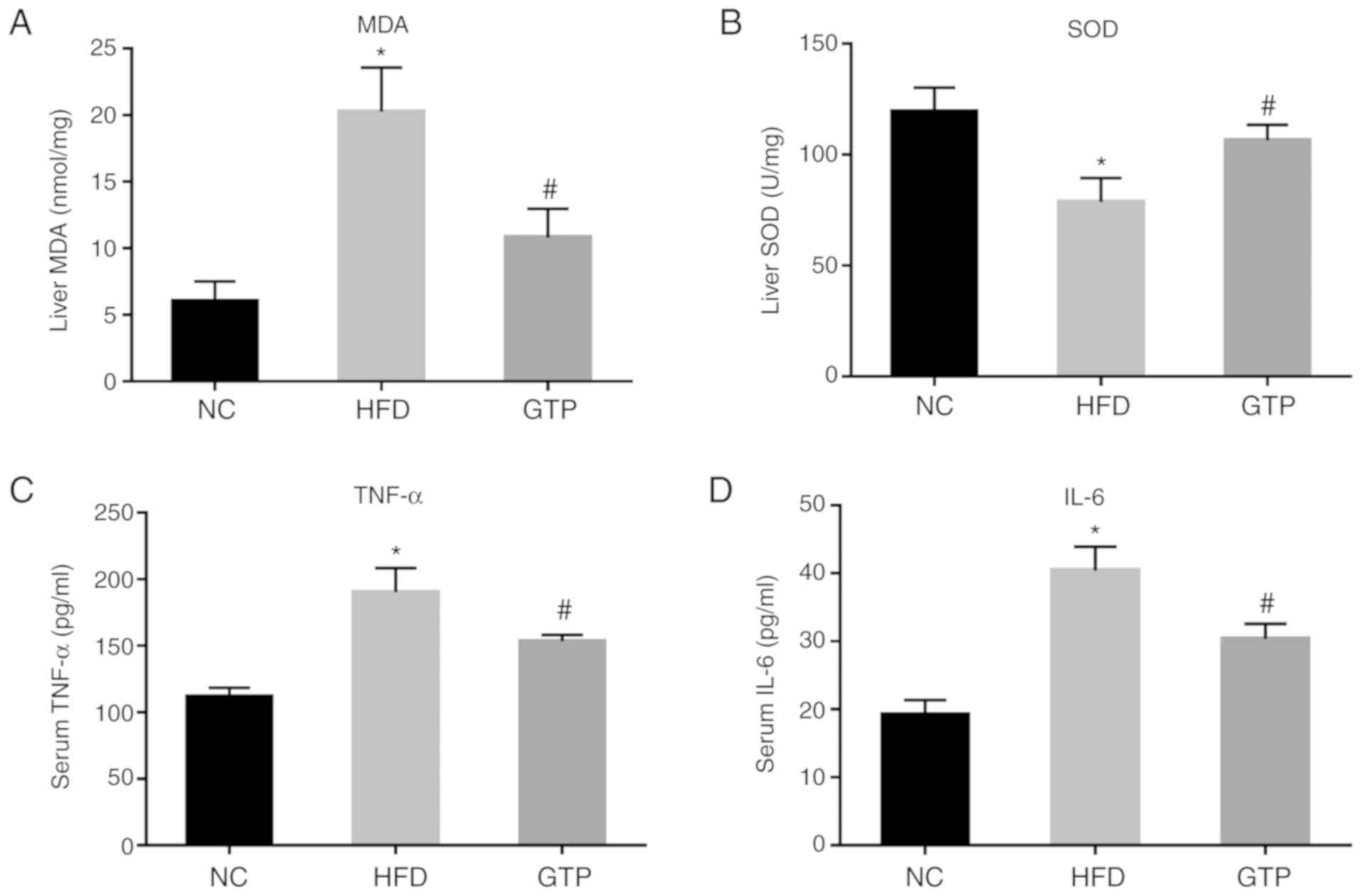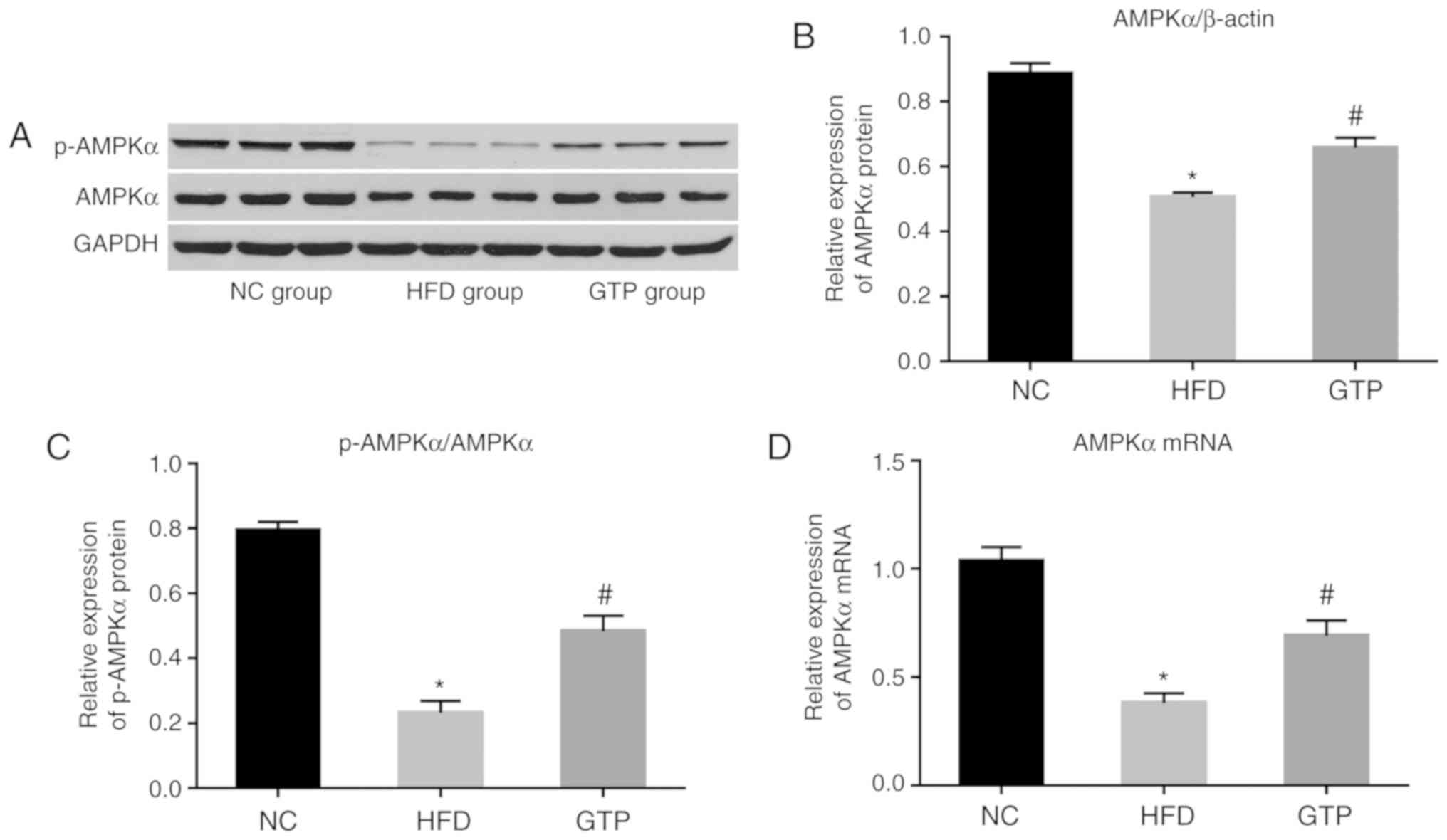|
1
|
Lee JH, Baek SY, Jang EJ, Ku SK, Kim KM,
Ki SH, Kim CE, Park KI, Kim SC and Kim YW: Oxyresveratrol
ameliorates nonalcoholic fatty liver disease by regulating hepatic
lipogenesis and fatty acid oxidation through liver kinase B1 and
AMP-activated protein kinase. Chem Biol Interact. 289:68–74. 2018.
View Article : Google Scholar : PubMed/NCBI
|
|
2
|
Chalasani N, Younossi Z, Lavine JE,
Charlton M, Cusi K, Rinella M, Harrison SA, Brunt EM and Sanyal AJ:
The diagnosis and management of nonalcoholic fatty liver disease:
Practice guidance from the American Association for the Study of
Liver Diseases. Hepatology. 67:328–357. 2018. View Article : Google Scholar
|
|
3
|
Williams CD, Stengel J, Asike MI, Torres
DM, Shaw J, Contreras M, Landt CL and Harrison SA: Prevalence of
nonalcoholic fatty liver disease and nonalcoholic steatohepatitis
among a largely middle-aged population utilizing ultrasound and
liver biopsy: A prospective study. Gastroenterology. 140:124–131.
2011. View Article : Google Scholar
|
|
4
|
Wong VW, Chu WC, Wong GL, Chan RS, Chim
AM, Ong A, Yeung DK, Yiu KK, Chu SH, Woo J, et al: Prevalence of
non-alcoholic fatty liver disease and advanced fibrosis in Hong
Kong Chinese: A population study using proton-magnetic resonance
spectroscopy and transient elastography. Gut. 61:409–415. 2012.
View Article : Google Scholar
|
|
5
|
Luo P, Qin C, Zhu L, Fang C, Zhang Y,
Zhang H, Pei F, Tian S, Zhu XY, Gong J, et al: Ubiquitin-specific
peptidase 10 (USP10) inhibits hepatic steatosis, insulin
resistance, and inflammation through Sirt6. Hepatology.
68:1786–1803. 2018. View Article : Google Scholar : PubMed/NCBI
|
|
6
|
Anstee QM, Targher G and Day CP:
Progression of NAFLD to diabetes mellitus, cardiovascular disease
or cirrhosis. Nat Rev Gastroenterol Hepatol. 10:330–344. 2013.
View Article : Google Scholar : PubMed/NCBI
|
|
7
|
Samuel VT, Liu ZX, Qu X, Elder BD, Bilz S,
Befroy D, Romanelli AJ and Shulman GI: Mechanism of hepatic insulin
resistance in non-alcoholic fatty liver disease. J Biol Chem.
279:32345–32353. 2004. View Article : Google Scholar : PubMed/NCBI
|
|
8
|
Savage DB, Petersen KF and Shulman GI:
Disordered lipid metabolism and the pathogenesis of insulin
resistance. Physiol Rev. 87:507–520. 2007. View Article : Google Scholar : PubMed/NCBI
|
|
9
|
El-Sherbiny M, Eldosoky M, El-Shafey M,
Othman G, Elkattawy HA, Bedir T and Elsherbiny NM: Vitamin D
nano-emulsion enhances hepatoprotective effect of conventional
vitamin D in rats fed with a high-fat diet. Chem Biol Interact.
288:65–75. 2018. View Article : Google Scholar : PubMed/NCBI
|
|
10
|
Day CP: Non-alcoholic fatty liver disease:
A massive problem. Clin Med (Lond). 11:176–178. 2011. View Article : Google Scholar
|
|
11
|
Ding S, Jiang J, Zhang G, Bu Y, Zhang G
and Zhao X: Resveratrol and caloric restriction prevent hepatic
steatosis by regulating SIRT1-autophagy pathway and alleviating
endoplasmic reticulum stress in high-fat diet-fed rats. PLoS One.
12:e01835412017. View Article : Google Scholar : PubMed/NCBI
|
|
12
|
Rotman Y and Sanyal AJ: Current and
upcoming pharmacotherapy for non-alcoholic fatty liver disease.
Gut. 66:180–190. 2017. View Article : Google Scholar
|
|
13
|
Sabu MC, Smitha K and Kuttan R:
Anti-diabetic activity of green tea polyphenols and their role in
reducing oxidative stress in experimental diabetes. J
Ethnopharmacol. 83:109–116. 2002. View Article : Google Scholar : PubMed/NCBI
|
|
14
|
Kim JJ, Tan Y, Xiao L, Sun YL and Qu X:
Green tea polyphenol epigallocatechin-3-gallate enhance glycogen
synthesis and inhibit lipogenesis in hepatocytes. Biomed Res Int.
2013:9201282013. View Article : Google Scholar : PubMed/NCBI
|
|
15
|
Lubaczeuski C, Gonçalves LM, Vettorazzi
JF, Kurauti MA, Santos-Silva JC, Bonfleur ML, Boschero AC,
Costa-Júnior JM and Carneiro EM: Vagotomy reduces insulin clearance
in obese mice programmed by low-protein diet in the adolescence.
Neural Plast. 2017:96529782017. View Article : Google Scholar : PubMed/NCBI
|
|
16
|
Kalantar M, Kalantari H, Goudarzi M,
Khorsandi L, Bakhit S and Kalantar H: Crocin ameliorates
methotrexate-induced liver injury via inhibition of oxidative
stress and inflammation in rats. Pharmacol Rep. 71:746–752. 2019.
View Article : Google Scholar : PubMed/NCBI
|
|
17
|
Jiang S, Tang X, Wang K, Liang Y, Qian Y,
Lu C and Cai L: Hepatic functional and pathological changes of type
1 diabetic mice in growing and maturation time. J Cell Mol Med. Jun
20–2019, (Epub ahead of print). http://doi.org/10.1111/jcmm.14504urisimpledoi.org/10.1111/jcmm.14504.
View Article : Google Scholar
|
|
18
|
Livak KJ and Schmittgen TD: Analysis of
relative gene expression data using real-time quantitative PCR and
the 2(-Delta Delta C(T)) method. Methods. 25:402–408. 2001.
View Article : Google Scholar
|
|
19
|
Tilg H and Moschen AR: Insulin resistance,
inflammation, and non-alcoholic fatty liver disease. Trends
Endocrinol Metab. 19:371–379. 2008. View Article : Google Scholar : PubMed/NCBI
|
|
20
|
Gong J, Fang C, Zhang P, Wang PX, Qiu Y,
Shen LJ, Zhang L, Zhu XY, Tian S, Li F, et al: Tumor progression
locus 2 in hepatocytes potentiates both liver and systemic
metabolic disorders in mice. Hepatology. 69:524–544. 2019.
View Article : Google Scholar
|
|
21
|
Zhao GN, Zhang P, Gong J, Zhang XJ, Wang
PX, Yin M, Jiang Z, Shen LJ, Ji YX, Tong J, et al: Tmbim1 is a
multivesicular body regulator that protects against non-alcoholic
fatty liver disease in mice and monkeys by targeting the lysosomal
degradation of Tlr4. Nat Med. 23:742–752. 2017. View Article : Google Scholar : PubMed/NCBI
|
|
22
|
Kitade H, Chen G, Ni Y and Ota T:
Nonalcoholic fatty liver disease and insulin resistance: New
insights and potential new treatments. Nutrients. 9:pii: E387.
2017. View Article : Google Scholar : PubMed/NCBI
|
|
23
|
Samuel VT and Shulman GI: Mechanisms for
insulin resistance: Common threads and missing links. Cell.
148:852–871. 2012. View Article : Google Scholar : PubMed/NCBI
|
|
24
|
Arora A and Sharma P: Non-invasive
diagnosis of fibrosis in non-alcoholic fatty liver disease. J Clin
Exp Hepatol. 2:145–155. 2012. View Article : Google Scholar : PubMed/NCBI
|
|
25
|
Podrini C, Borghesan M, Greco A, Pazienza
V, Mazzoccoli G and Vinciguerra M: Redox homeostasis and
epigenetics in non-alcoholic fatty liver disease (NAFLD). Curr
Pharm Des. 19:2737–2746. 2013. View Article : Google Scholar
|
|
26
|
Reddy VP, Zhu X, Perry G and Smith MA:
Oxidative stress in diabetes and Alzheimer's disease. J Alzheimers
Dis. 16:763–774. 2009. View Article : Google Scholar : PubMed/NCBI
|
|
27
|
Kishimoto T: IL-6: From its discovery to
clinical applications. Int Immunol. 22:347–352. 2010. View Article : Google Scholar : PubMed/NCBI
|
|
28
|
Lesmana CR, Hasan I, Budihusodo U, Gani
RA, Krisnuhoni E, Akbar N and Lesmana LA: Diagnostic value of a
group of biochemical markers of liver fibrosis in patients with
non-alcoholic steatohepatitis. J Dig Dis. 10:201–206. 2009.
View Article : Google Scholar : PubMed/NCBI
|
|
29
|
Xiao J, Ho CT, Liong EC, Nanji AA, Leung
TM, Lau TY, Fung ML and Tipoe GL: Epigallocatechin gallate
attenuates fibrosis, oxidative stress, and inflammation in
non-alcoholic fatty liver disease rat model through TGF/SMAD, PI3
K/Akt/FoxO1, and NF-kappa B pathways. Eur J Nutr. 53:187–199. 2014.
View Article : Google Scholar
|
|
30
|
Wen H, Ting JP and O'Neill LA: A role for
the NLRP3 inflam-masome in metabolic diseases-did Warburg miss
inflammation? Nat Immunol. 13:352–357. 2012. View Article : Google Scholar : PubMed/NCBI
|
|
31
|
Park MH, Kim DH, Lee EK, Kim ND, Im DS,
Lee J, Yu BP and Chung HY: Age-related inflammation and insulin
resistance: A review of their intricate interdependency. Arch Pharm
Res. 37:1507–1514. 2014. View Article : Google Scholar : PubMed/NCBI
|
|
32
|
Guturu P and Duchini A: Etiopathogenesis
of nonalcoholic steatohepatitis: Role of obesity, insulin
resistance and mechanisms of hepatotoxicity. Int J Hepatol.
2012:2128652012. View Article : Google Scholar : PubMed/NCBI
|
|
33
|
Jones JG: Hepatic glucose and lipid
metabolism. Diabetologia. 59:1098–1103. 2016. View Article : Google Scholar : PubMed/NCBI
|
|
34
|
Lambert JE, Ramos-Roman MA, Browning JD
and Parks EJ: Increased de novo lipogenesis is a distinct
characteristic of individuals with nonalcoholic fatty liver
disease. Gastroenterology. 146:726–735. 2014. View Article : Google Scholar
|
|
35
|
Smith BK, Marcinko K, Desjardins EM, Lally
JS, Ford RJ and Steinberg GR: Treatment of nonalcoholic fatty liver
disease: Role of AMPK. Am J Physiol Endocrinol Metab.
311:E730–E740. 2016. View Article : Google Scholar : PubMed/NCBI
|
|
36
|
Chiu CY, Chan IL, Yang TH, Liu SH and
Chiang MT: Supplementation of chitosan alleviates high-fat
diet-enhanced lipogenesis in rats via adenosine monophosphate
(AMP)-activated protein kinase activation and inhibition of
lipogenesis-associated genes. J Agric Food Chem. 63:2979–2988.
2015. View Article : Google Scholar : PubMed/NCBI
|
|
37
|
Cho YS, Lee JI, Shin D, Kim HT, Jung HY,
Lee TG, Kang LW, Ahn YJ, Cho HS and Heo YS: Molecular mechanism for
the regulation of human ACC2 through phosphorylation by AMPK.
Biochem Biophys Res Commun. 391:187–192. 2010. View Article : Google Scholar
|
|
38
|
Choi S, Choi Y, Choi Y, Kim S, Jang J and
Park T: Piperine reverses high fat diet-induced hepatic steatosis
and insulin resistance in mice. Food Chem. 141:3627–3635. 2013.
View Article : Google Scholar : PubMed/NCBI
|















